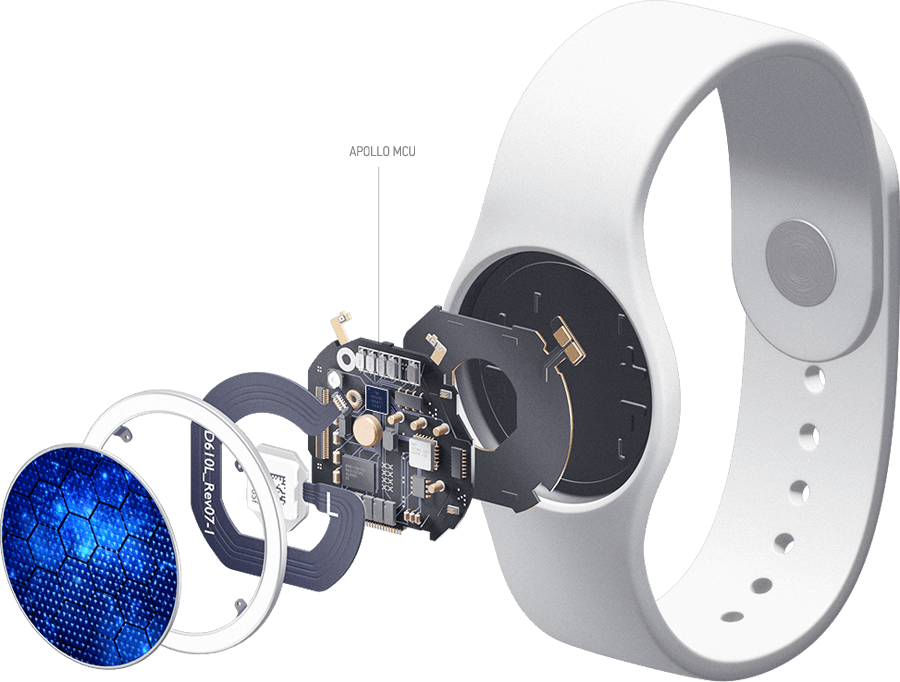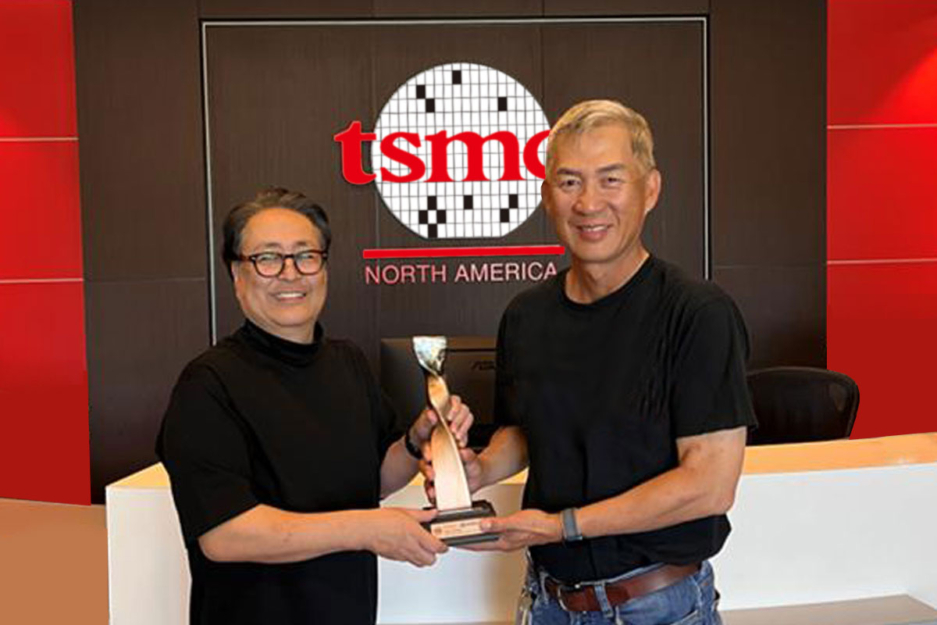Considerations To Know About apollo3 blue
Considerations To Know About apollo3 blue
Blog Article

Powered from the Ambiq Apollo3 Blue microcontroller (MCU), the token is really a physical device applying Bluetooth® alerts to trace Some others nearby. In addition to becoming accurate, secured, Harmless, As well as in a small form factor, the Apollo3 Blue provides the required efficiency with out sacrificing battery lifetime. The token is expected to last 4 to six months without a recharge.
Because of this, the business has assisted numerous main worldwide brands develop items that can work for days – at times several years – possibly by battery or Power harvest.
Apollo four over the start pad Apollo 4 was the initial flight of a Saturn V. At the time, it absolutely was the most important launch automobile to ever endeavor a flight.[34] This mission was The 1st time NASA utilised "all-up" screening, requiring that every phase in the launch auto get the job done and the car have a Functioning spacecraft; a decision that goes again to late 1963.[35] Mueller, The top from the NASA Office of Manned House Flight At the moment, was a techniques engineer who previously labored on armed forces missile jobs. He had regarded that each one-up testing was properly accustomed to swiftly develop the Air Pressure's Minuteman ICBM application, and thought it could be accustomed to meet Apollo's schedule.[36] Inside a 1963 memo he purchased that each the first Saturn IB flight and the primary Saturn V flight be uncrewed, that each phase be completely practical, and that every carry a Doing the job spacecraft.
Ambiq was Launched in 2010 Along with the mission To place intelligence everywhere by creating essentially the most Vitality-effective engineering platforms and answers for battery-driven IoT endpoint devices. Ambiq's patented Subthreshold Electricity Optimized Technological innovation (Place™) platform is proven to significantly cut down devices' In general electric power usage with out compromising their battery lifestyle or performance.
Additionally, it demonstrated the S-IVB 3rd phase's 1st in-flight restart. The mission employed a Block I command and service module modified to check quite a few critical Block II revisions, which include its heat shield at simulated lunar-return velocity and angle.
Meanwhile, on May perhaps 24, engineers within the North American plant uncovered hairline cracks in propellant tank welds of A further S-II phase. The next day, employees within the VAB commenced the 2nd destack with the rocket, eliminating the S-II stage on June 3 for in-depth inspections. Intensive X-ray and dye penetrant assessments uncovered no cracks, and workers started re-assembling the rocket on June 18. Engineers in the MSOB concluded the wiring operate in CM-017, reassembled it with its other elements, and returned it to the VAB where by floor crews stacked the spacecraft for the final time on June twenty. The stacking, unstacking, and restacking course of action experienced taken eight months.
Apollo eleven was released by a Saturn V rocket from Kennedy Place Centre on Merritt Island, Florida, on July sixteen at thirteen:32 UTC, and it absolutely was the fifth crewed mission of NASA's Apollo program. The Apollo spacecraft had three elements: a command module (CM) by using a cabin for that a few astronauts, the only real part that returned to Earth; a service module (SM), which supported the command module with propulsion, electrical energy, oxygen, and drinking water; as well as a lunar module (LM) that had two stages—a descent phase for landing on the Moon and an ascent stage to place the astronauts again into lunar orbit.
TSMC’s impressive 22nm embedded MRAM engineering, which was adopted in Apollo4, is vital to assistance on-chip code storage for SoC features to obtain business-primary power functionality.”
On May possibly 24 it had been announced which the S-II can be eliminated for inspection following the invention of hairline cracks in One more S-II then becoming manufactured, this work remaining completed by mid-June, after which the CSM was also returned on the stack, The very first time the launch car or truck and spacecraft had been completely assembled. It was rolled out to LC-39 on August 26, 1967,[fourteen] in which it was joined because of the Mobile Servicing Composition that authorized use of the launch car or truck and spacecraft two days afterwards, also transported by crawler.[18] This was The 1st time a NASA spacecraft had been assembled faraway from its launch web-site, one thing allowing safety from Florida's warm and humid local weather for machines and personnel.[19]
A proprietary calibration algorithm to digitally tune the RC and XT oscillator frequency with precision as little as 2 ppm.
Proprietary audio interfaces and an extremely-very low energy analog microphone ADC for actually normally-on voice processing. Enhanced digital audio interfaces to assist superior fidelity, various channel audio processing.
The Eagle has landed.” Mission Management erupts in celebration as The strain breaks, in addition to a controller tells the crew “You bought lots of fellas going to turn blue, we’re breathing once more.” (› Perform Audio)
Ambiq is devoted to further Increase the quality of life by enabling the intelligence of endpoints while even further minimizing carbon footprints. Ambiq – your companion in endpoint intelligence.
For decades, Aldrin considered the ultimate choice was mainly driven by the lunar module's hatch site. Because the astronauts experienced their spacesuits on as well as the spacecraft was so small, maneuvering to exit the spacecraft was tricky. The crew attempted a simulation wherein Aldrin still left the spacecraft to start with, but he destroyed the simulator whilst aiming to egress.
Get Smart. Use Less Energy.
Ultra-low power SoCs for IoT endpoint devices
that demand complex operations
and longer battery life.
✍ Ambiq® is committed to further improve the quality of life by enabling the intelligence of endpoints while further reducing carbon footprints. Ambiq – your partner in endpoint intelligence.
✯✯✯Based in Austin, San Jose, Hsinchu, Shenzhen, and Shanghai, our leadership and management teams consist of advocates, builders, enthusiasts, entrepreneurs, explorers, incubators, inventors, pioneers, protectors, thinkers, and visionaries. With a diverse spectrum of experiences and skillset, we came together and united with one goal to enable the true Internet of Things where the battery-powered endpoint devices can truly be connected intuitively and intelligently Low-power processing 24/7.
Ambiq Wins the Demo of the Year Award at 2023 TSMC Technology Symposium
September 7, 2023, Austin, TX – Ambiq®, a leading developer of ultra-low-power semiconductor solutions that deliver a multifold increase in energy efficiency, was awarded the Demo of the Year Award by TSMC as a participant of the Innovation Zone at the 2023 TSMC North America Technology Symposium.
Ambiq Wins the Demo of the Year Award at 2023 TSMC Technology Symposium
During the April event, Ambiq showcased various product design wins using TSMC’s 22nm technology in wearables, digital health, smart home, Industrial IoT, pet trackers, and retail segments, with industry-leading energy efficiency. Ambiq also featured two live demos emphasizing its leadership in enabling endpoint AI with its HeartKit™ for remote patient monitoring and its graphics display capabilities for a vivid user interface. 
TSMC pioneered the pure-play semiconductor foundry business model when it was founded in 1987, helping startup companies accelerate their innovations by providing access to the industry’s leading process technologies and manufacturing capacity. Since 2021, TSMC has expanded that mission with an Innovation Zone at its worldwide Technology Symposiums, highlighting how TSMC partners with startup companies to enable cutting-edge products from various applications, including high-performance computing, communication, automotive, IoT, and consumer segments.
“We’re grateful to TSMC and our booth visitors for allowing us to share our energy-efficient technology and processor solutions with them,” said Ambiq’s CEO, Fumihide Esaka. “We’re moving towards an exciting frontier of AI becoming more engrained with our daily lives. With that vision on the horizon, we will continue to develop innovative and first-of-its-kind ultra-low-powered solutions that keep innovation and sustainability in mind. 
Ambiq’s mission is to develop the lowest-power semiconductor solutions to enable intelligent devices everywhere by developing the lowest-power semiconductor solutions to drive a more energy-efficient, sustainable, and data-driven world. Ambiq has helped leading manufacturers worldwide develop products that last weeks on a single charge (rather than days), while delivering a maximum feature set in compact industrial designs. Ambiq’s goal is to take Artificial Intelligence (AI) where it has never gone before in mobile and portable devices, using Ambiq’s advanced ultra-low power system on chip (SoC) solutions. Ambiq has shipped more than 200 million units as of March 2023.
Ambiq Designs Low-Power for Apollo4 blue plus Next Gen Endpoint Devices
Ambiq’s VP of Architecture and Product Planning, Dan Cermak, joins the ipXchange team at CES to discuss how manufacturers can improve their products with ultra-low power. As technology becomes more sophisticated, energy consumption continues to grow. Here Dan outlines how Ambiq stays ahead of the curve by planning for energy requirements 5 years in advance.
Ambiq Highlights From Embedded World 2024
Facebook | Linkedin | Twitter | YouTube